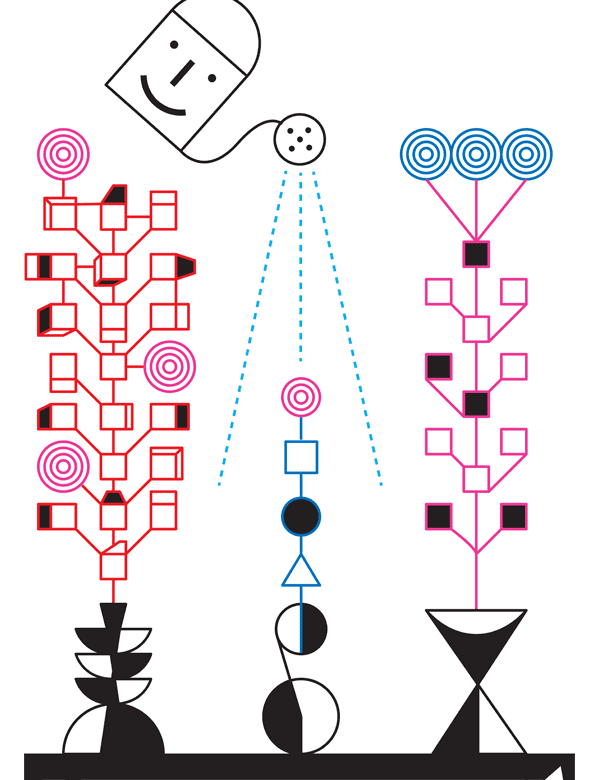Of the survey respondents who report a blockchain project in the pilot stage, 54 percent say the effort sometimes or often hasn’t been justified by the result. This should be a call to more effective action. To help executives answer that call, the report offers four strategies that can be used to build trust. ... The participants in a blockchain ecosystem need to decide what the operating standards will be and what various users will be able to see and do. The design begins with the strategic business model, which includes making decisions about whether the blockchain will be permissionless, and thus available to everyone, or permissioned (having various levels of permissions). Permissions determine participants’ roles and engagement with the blockchain, which can vary from entering information or transactions to only viewing information. The choice of model isn’t automatic; organizations will decide based on design and use case considerations. They will also need to consider the type of network to establish. Forty percent of survey respondents report that they are using permissioned blockchains, 34 percent are working with permissionless chains, and 26 percent are taking a hybrid approach
How to put cybersecurity threats into a business context
Focusing on business impact is a different way to think about cybersecurity, and it requires a different mindset than that of tactically responding to cybersecurity threats. Cybersecurity used to be all about preventing attacks, and a breach either occurred or it didn't. "Now, most organizations understand that cybersecurity is not a problem to be solved but a risk to be managed," says Andrew Morrison, US leader of cyberstrategy defense and response at Deloitte & Touche. "Most of the market is acclimated to the fact that it's not longer if an attack will occur but when an attack will occur and how we will manage it. That entails a totally different mindset. "Risks, by nature, can be accepted, mitigated, or transferred," he says. ... A business-focused description of the same problem, however, might be that patching the vulnerability will reduce the probability of a breach to a particular database, which, if exposed, will cost a particular amount of money in lost business, fines and remediation expenses.
Big data processing techniques to streamline analytics

Addressing big data processing techniques requires innovative algorithms and programming, rather than simply adding hardware power. A solution widely used is indexing and partitioning the data to provide better access. GeoSpock's infin8 uses data indexing to process and organize data for subsecond data retrieval by ingesting and processing raw data at any scale, then creating an organized index that preserves every record of the original data set. Making the algorithms smarter has another interesting effect, too, allowing companies to reliably harvest data from images, video and audio that opens the door to new generations of applications that can "look and hear." These advancements let machines scan footage and tag the objects or people they detect. It can also be used as part of companies' intelligence-gathering arsenal. Artificial intelligence provides big benefits in this realm. Advancements in artificial intelligence require large amounts of data to operate properly, and these AI tools provide a better view of the data to see what parts of the data set are more useful and which parts have less value that can be deprioritized.
Why Business Leaders Shouldn’t Have Blind Faith in AI

Most machine learning algorithms are also bad at thinking about what Athey calls “what-if” scenarios. Like what would happen if a company were to change its prices, or if it hadn’t run a certain ad campaign. And here is where misguided faith in the accuracy of machine learning can become problematic in practice. Consider an algorithm designed to predict hotel-room occupancy based on observed prices, Athey says. It would look at historical occupancy rates and prices and draw the correct conclusion that the hotel is full when prices are high. However, if that predictive model was applied to optimize prices, it would lead to the conclusion that in order to get more people into your hotel, you should raise prices. “Which is of course wrong,” Athey says. “Just because higher prices are correlated with a full hotel doesn’t mean if you change your price you will sell more hotel rooms.”
Regulators can do more to encourage fintech innovation
A lot of work has been done in this area by the Consumer Financial Protection Bureau’s Office of Innovation and Project Catalyst, its predecessor, and by states like Arizona, which became the first state in the United States to adopt a regulatory sandbox statute. Yet these efforts, while welcome, fall short because they are largely focused on each agency’s policies and procedures and participant eligibility. Fintechs need more than process-oriented frameworks. To be successful, regulatory sandboxes require clearly articulated safeguards, terms of use and expectations on transparency. These matters are too important to be left to one-off negotiations. Regulatory sandboxes sound like a great idea, but what actually is a regulatory sandbox? In order for regulatory sandboxes to succeed, stakeholders need to have a common understanding — and acceptance — of the basic concept. First, regulatory sandboxes need a better name. Terms like “clinical trial,” “experiment,” or “lab” may better convey what is really needed.
This AI can predict your personality just by looking at your eyes

The project used artificial intelligence to track and monitor the eye movements of 42 individuals using tools from SensoMotoric Instruments. Those findings were then cross-checked with well-established questionnaires that define personality traits. Of the five key traits – openness, conscientiousness, extraversion, agreeableness and neuroticism – the technology easily identified four: neuroticism, extraversion, agreeableness and conscientiousness. The 42 people were fitted with an eye tracker and given five Australian dollars and 10 minutes to make a purchase in a university campus shop. When they returned they removed the eye tracker and filled in personality and curiosity questionnaires. The findings were analyzed to show how trait-specific eye movements vary across activities. While the study used a small sample and the authors said the predictions aren’t yet accurate enough for practical applications, it does shed light on the close link between personality and eye movements. Pupil diameter, for example, was important for predicting neuroticism.
Meet Your New Colleague: AI

How potential employees actually speak to AI is a different conversation than how potential employees should speak to AI, he added. That is, it’s unclear whether how a person treats a machine says anything about how that person would treat other people, and it’s unclear whether something like a person being rude to a machine agent should impact their job prospects. “We can certainly agree that we do care if it’s a human recruiting coordinator,” Mortenson said. But machines have no feelings or emotions and cannot be offended, so it would be easy to argue why employers shouldn’t care. Ultimately, “I do think we should care even if it is a machine,” Mortenson said. “I understand why we might care a little bit less, but I don’t think we can just discard that as a signal.” He gave the example of a report which found that this technology could have implications on how kids learn how to communicate and teach them that speaking harshly or impolitely to people has no consequences.
How digital technology is changing the world
Hitachi is working with major manufacturers on their digitisation journey, moving away from the conventional customer/supplier relationship and focusing on digital innovation through co-creation. This approach is already delivering results. Swedish ferry operator Stena Line, for instance, wanted to optimise many aspects of its operations, to reduce costs and inefficiencies such as excess fuel consumption. Hitachi gathered data from its ship’s operations and functions and used it to develop an AI algorithm that calculated an optimal way of steering Stena’s vessels and reducing fuel consumption. Mr Ramachander says: “We couldn’t have done that in isolation, without the shipping company. Co-creation is about working with our clients to solve their problems. In a move away from the traditional customer/supplier relationship, we are aiming to become their digital innovation business partner.”
Managing to the Next Century - The 5 Big Things For Agile Transitions

In the new agile world, it is neither possible to tell people to do a particular task or plan at the same level of breadth or depth. Work is defined, managed and executed by empowered teams who are not focused on the task, but instead the outcome they are trying to achieve. Quality including technical debt is treated in the same way that value is treated allowing the team and the business to make explicit, transparent decisions on trade-offs. But moving away from traditional managed work to a more agile approach requires more than managers stepping away ... At the very heart of the agile organization is a collection of teams, self-organized and empowered to make decisions. They have all the right skills to deliver value and are supported by an organization that fills in any gaps and helps them to get better. At scale that means teams of teams and the adoption of practices to ensure that dependencies are effectively managed.
Banking on artificial intelligence

Automation and handling masses of data is very valuable indeed but front-line services are also receiving attention and it is here, when married with human intervention, that excitement lies around the use of AI. The concept lies in being able to enhance the service provided to customers via virtual assistants, chatbots, robo-advisors and other analytical tools, all of which can be made more effective when machine learning and AI are applied. Providing better customer service is a good use for AI and something that all banks are focused on. Indeed, banks are commonly using chatbots and voicebots to interact with customers and solve basic problems without the need for human backup. Avika says: “Banks are using machine learning to improve customer engagement in order to increase customer satisfaction. For example, applying machine learning to unstructured complaints data can help a bank to group the complaints into categories, allowing them to tackle the areas that will have the biggest customer impact first. ...”
Quote for the day:
"You may be disappointed if you fail, but you are doomed if you don't try." -- Beverly Sills

No comments:
Post a Comment